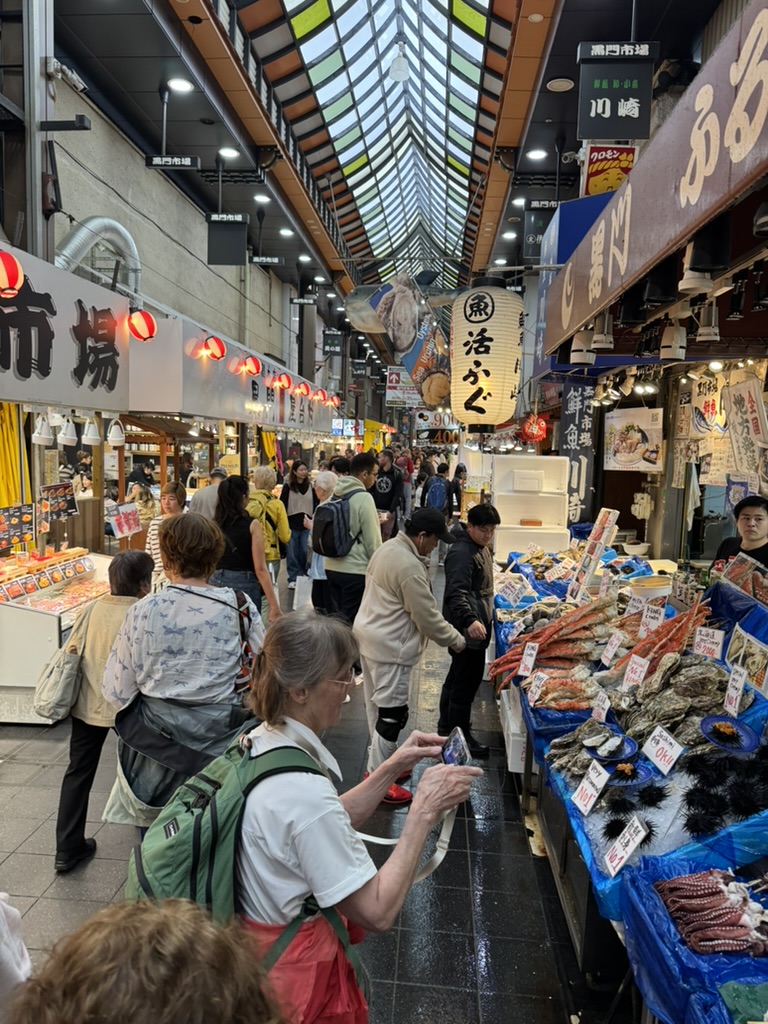
This is it, the first full day in Japan. We had arrived the night before after over 17 and a half hours in the air. We were not sure how we would adjust to the +13 hour time difference. Teresa had been to Tokyo (twice) for business and this was completely for leisure. I had not been at all. Actually of the four of us, I was the lone one traveling this far. Our friends had been to the land down under just a few years ago. Still, we wanted to take it slow. We got in around 9pm and checked into the hotel (Hotel Vista Osaka Namba).
We got up early and had a traditional Japanese breakfast at the hotel. I was expecting a little jet lag, but I believe that the airline (ANA) worked very well to adjust the passenger’s ‘time’ schedule. I was ready to go and it was 8am.
Teresa had lined up a local city guide to show us around through Viator. We had some time to kill and since the hotel was located near Dotonbori where we were meeting our guide, we set out to explore a little before our meeting time of 10am.
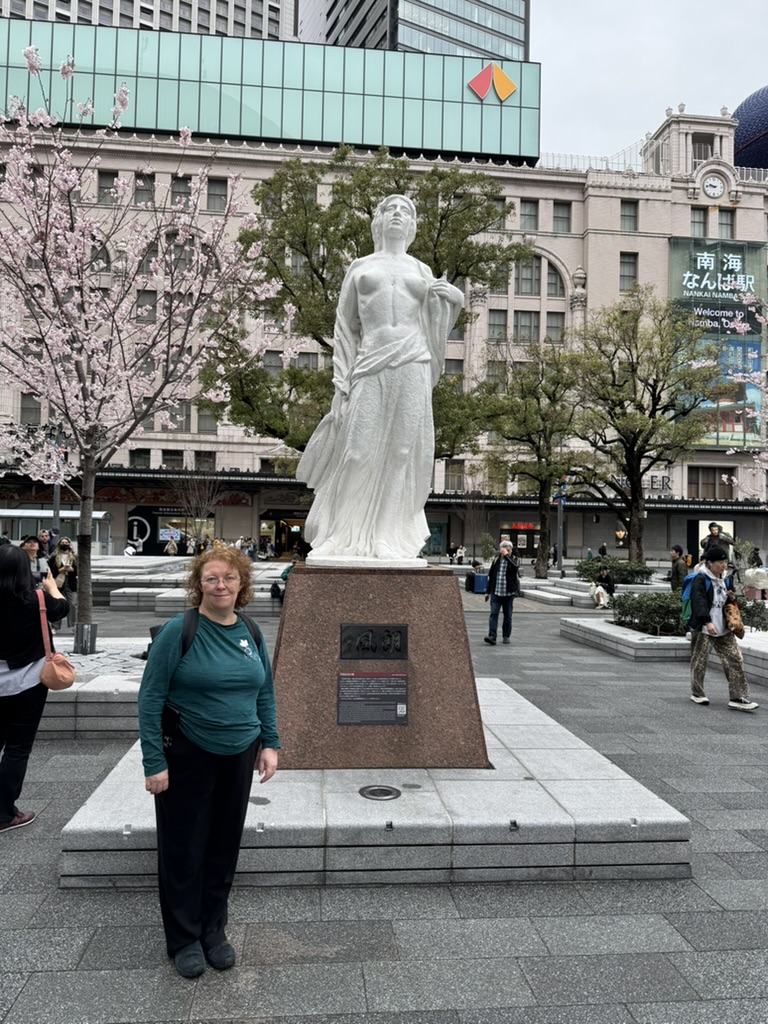
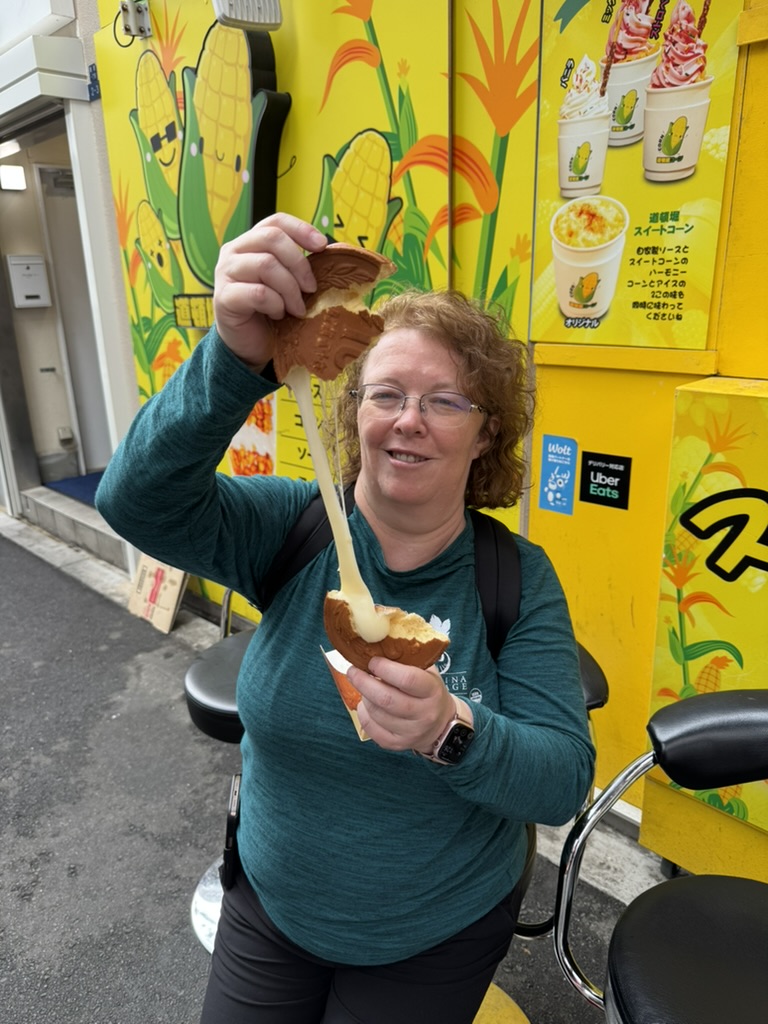
A little about Dotonbori, it is one of those places you just have to experience if you’re in Osaka. It’s like the heartbeat of the city with its crazy neon lights and a vibe that’s always buzzing. Whether you’re there for the mouthwatering street food or just to soak up the lively atmosphere, it never disappoints. You’ll find iconic billboards, like the famous Glico running man, and a nightlife scene that’s second to none. It’s perfect for a night out with friends or just wandering around to see what you stumble upon. Trust me, there’s always something happening in Dotonbori, and it’s a spot you won’t forget anytime soon!
So, we set out and found the markets were just opening. We stopped here and there. We walked around and found the central train station. It is on the edge, or maybe a part of Dotonbori and found our first blossoming Cherry tree.
10 o’clock came and we had made our way back into Dotonbori to meet our tour guide. Her name was Haruhi. She took us around Dotonbori, giving us some of the history and pointing out various shops. It was a “foodie” tour and she asked if there was anything we had to see. I mentioned the “10 Yen Cheese Coin” and she knew exactly where the best shop was. (Note: First day and we thought she was just giving business to someone she knew, but later in our trip.) She also took us to a stand with skewers of Waygu beef (and also tofu for Teresa). It was also real good.
Next she took us through Hozenji Yokocho, a very narrow street or alley with lots of history over the decades and centuries. It led us to another small street with a tea house where we sat for tea and a sweet.


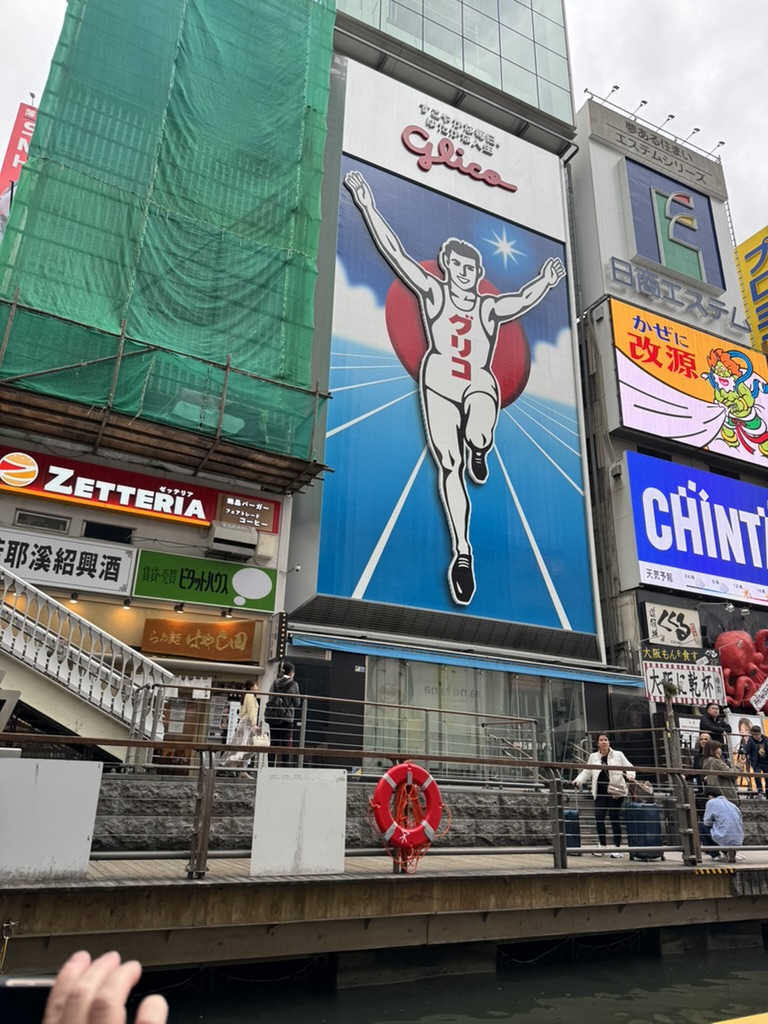
We walked and toured some more. Haruhi was very nice and we shared a lot about us with her as she did with us. Time was limited though and soon it was time to part ways. We had plans with our friends later this evening, but had plenty of free time to explore some more.
We walked to the river. We had seen a “ferris wheel” and we want to try it. We got to the river and walked down to Ebisu Tower Ferris Wheel, the “world’s first oval ferris wheel”. The entrance was on the third floor (3F) of a Don Quijoti. For those who don’t know, Don Quijoti claims to be Japan’s largest discount store. Think Wal*Mart, but with better quality goods (for the most part).
The ride costs just 1,000 yen per person and there is a discount with the Osaka Awesome Pass. It takes about 15 minutes and like any ride, it is subject to weather. It has a nice view and was pretty smooth.
It was only day one in our two week venture, so while we walked around Don Quijoti’s, we opted not to buy anything. Instead, we saw a river cruise.
The Dotonbori River Cruise is a 20-minute sightseeing boat ride on the Dotonbori River in Osaka, Japan. It offers a unique perspective of the area, including views of the nine iconic bridges and the vibrant Dotonbori nightlife. The cruise departs from the Tazaemonbashi Wharf, near the Don Quijote Dotonbori store.
Again, the price was cheap, only 2,000 yen per person (and cheaper with the Awesome Pass).
We boarded and then took a seat. Our first drawback was here as the tour guide for our cruise did not speak English. She knew a few phrases and warnings, but for the most part, her description of the areas were mainly in Japanese. This was no way a reflection on her and I am not pointing any fingers. The ride was enjoyable and Google streets was able to explain some of the sights she was pointing out. If you require an English speaking guide, we found out later we could have asked for a different boat.
It was getting late in the afternoon and we wanted to get back to the hotel to freshen up some before heading out with our friends.
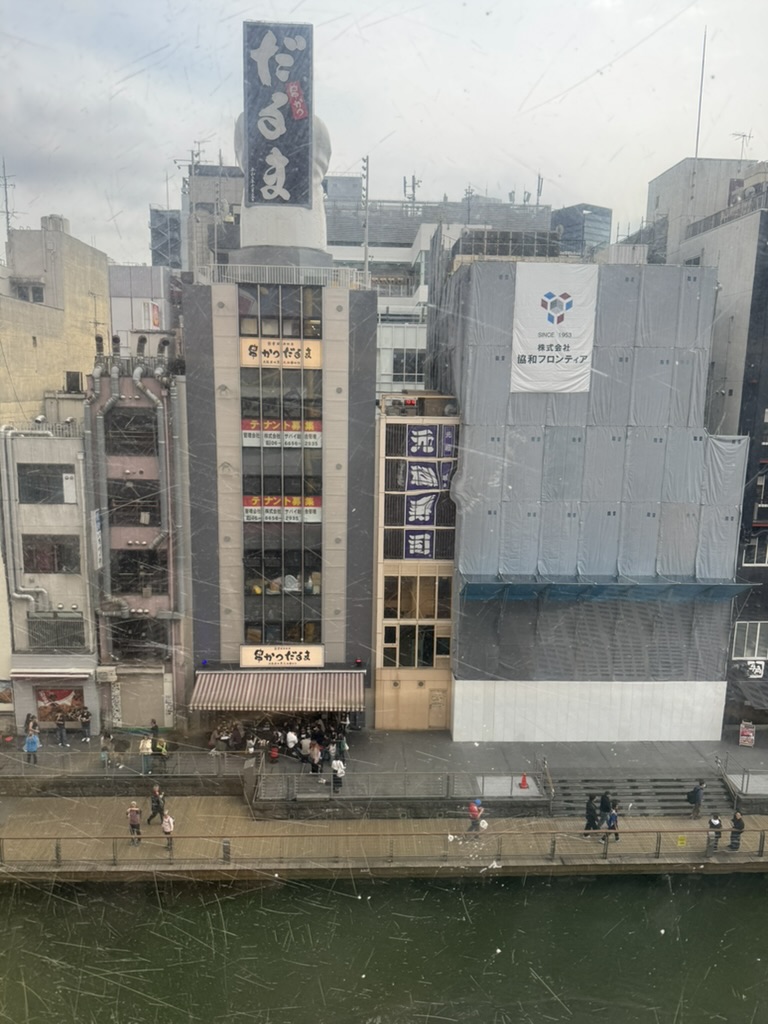

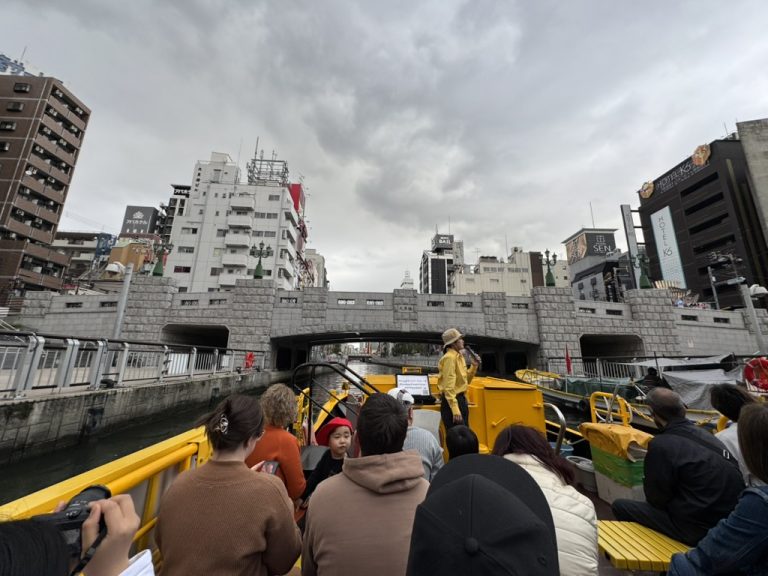
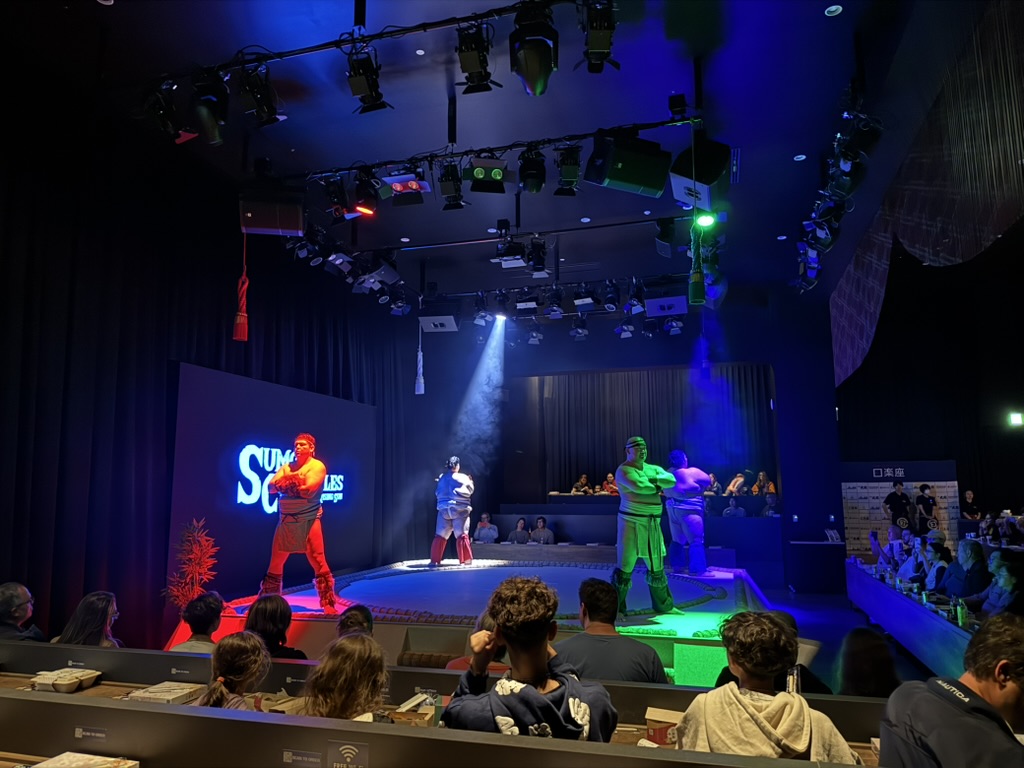

Our friends wanted to see Sumo and this place, Sumo Hall, looked promising. Matches were not in season, but this promised the experience, a chance to get in the ring, and dinner. They even has a vegetarian open for Teresa.
The MC of the show gave us a history of Sumo and its rules. I admit, I did not take notes, but knew I was going to write them up here. I am also not as elequent as the MC, but here goes:
History of Sumo Wrestling
Sumo wrestling is like the ancient Japanese version of WWE, but with more ritual and less spandex. This sport dates back over a thousand years, starting as a way to entertain the gods and make sure they didn’t mess with the crops. Can you imagine the gods sitting up there, popcorn in hand, watching humans in loincloths trying to shove each other out of a ring? By the time the Edo period rolled around, sumo had become so popular that even samurais were getting in on the action. Fast forward to 1925, when the Japan Sumo Association was founded, turning sumo into a global phenomenon. Today, sumo is still going strong, with six major tournaments each year where wrestlers battle it out for glory and an endless supply of chanko stew.
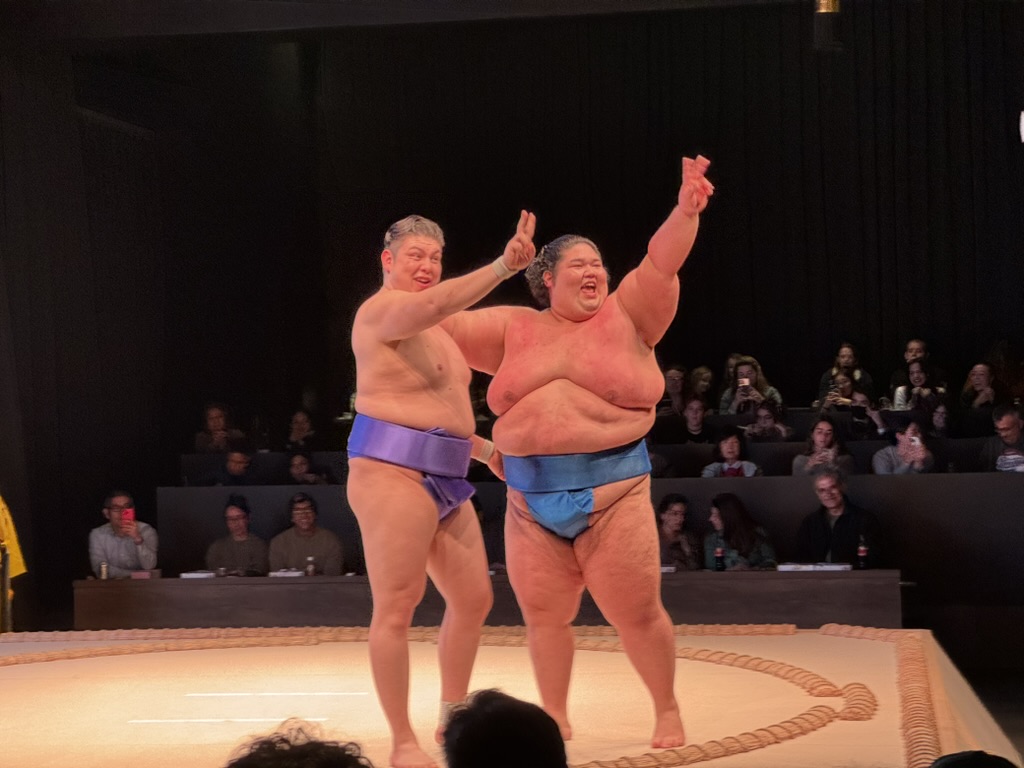

Rules of Sumo Wrestling
Sumo wrestling rules are simple: two big guys enter a ring, and one leaves with his dignity intact. The ring, called a dohyo, is like a sandbox for giants, where wrestlers perform rituals that include tossing salt to purify the area—because nothing says “I’m ready to rumble” like seasoning the ground. The goal is to push your opponent out of the ring or make them touch the ground with anything other than their feet. While you can shove and grapple to your heart’s content, pulling hair or bringing a folding chair into the ring is strictly off-limits. The referee, or gyōji, makes the final call, often while dressed like they just stepped out of a historical drama. Beyond the physical showdown, sumo is all about respect and etiquette, which means no trash-talking your opponent before or after you’ve flipped them onto their back.
After the demonstration, the MC announces that some eople from the audiance could attempt to wrestle a Sumo of their choosing. The first 20 to volunteer were given numbers and three were chosen. Both mike and myself ad our numbers in the hat., Mike’s got pulled and I was not so “lucky”.
Mike did his best, but did not last long. As he confessed, “There was no way, they are trained and large.”
We ended the night back at the hotel. This “slow start of the day packed a lot into it. Tomorrow? Osaka Castle.